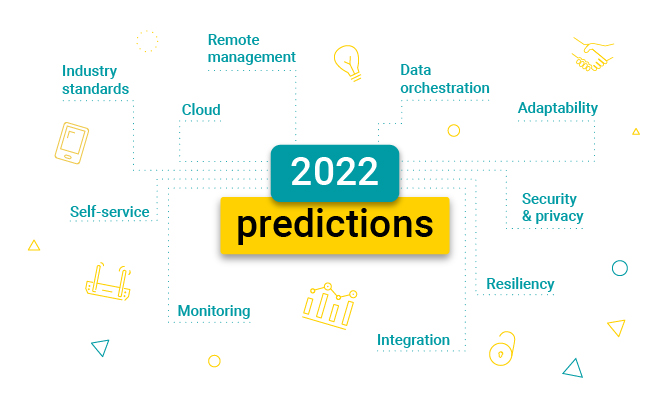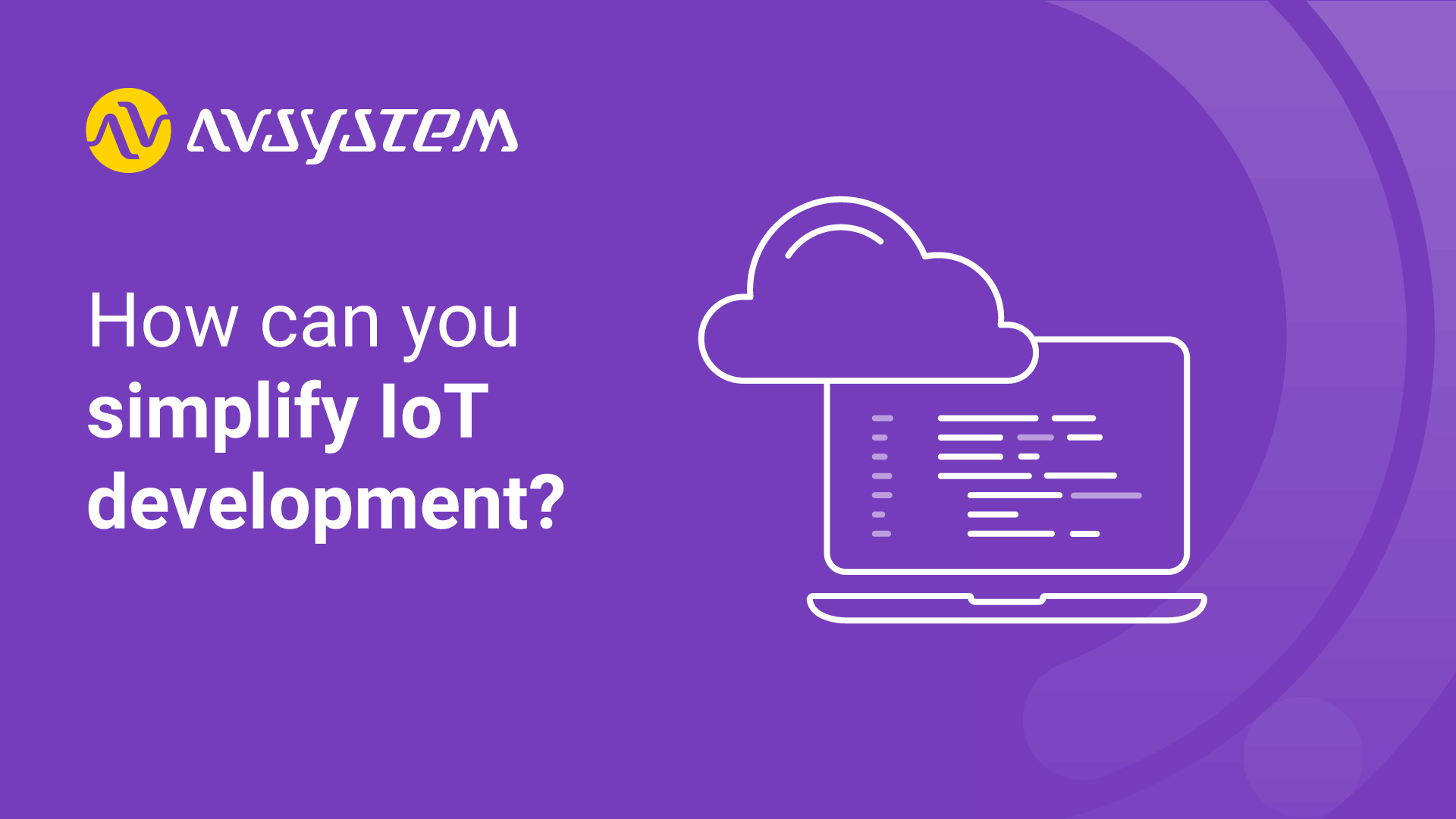10 predictions of what’s coming up in 2022

Plenty of “visionaries” and pundits have cast their predictions or even “prescriptions” on what’s coming up in the new year. What do I have to say?
Well, this is an on-the-ground, hands-on, in-the-trench kind of view on what’s going to accelerate and what’s going to fall to the wayside kind of predictions.
No matter how you look at it, the year 2022 is going to be a pivotal moment in history – are we finally going to resume our normal lives? Are things we are so used to changed forever? What does the new normal look like? And how does that impact the way science, technology, and digital transformation are going to be employed and deployed?
Let’s take the mega-trends and under-currents from thirty thousand feet down to the ground level of rubber meets the road.
1. Adaptability
Going into 2022, the word “uncertainty” is on everyone’s mind. Given the uncertainty of the global situation, business planning becomes tricky if you are not prepared to build adaptability into your operations. What it means for your technology projects is that you need to allow incremental value realization phased approach – “think big, execute incrementally.” This can be achieved for example by utilizing tools like Kubernetes, an open-source container orchestration system for automating software deployment, scaling, and management. Each step needs to yield tangible, quantifiable business value. Instead of connecting a million devices, how about ten thousand? Instead of moving your legacy system wholesale over to a digital platform, do it region by region. Or product line by product line. Agile development and adaptable deployment are the key to managing the uncertainty.
2. Resiliency – business continuity
Natural disasters (fire, flood, tornados), human conflicts (cyber attacks, data breaches, fraud), and anything in between, all of these call into action for businesses to manage crisis. Dealing with a disrupted supply chain and other critical and complex operational issues, companies have to continue their operations. Business continuity is of strategic importance. Because of that, companies will continue to prioritize and deploy tools and platforms for dealing with crisis, disruptions, security breaches, as well as business tools to arm functional teams and operations staff with the right information at the right time.
3. Monitoring
Commensurate to business continuity is the heightened need for monitoring. This means monitoring equipment, assets, processes and anomalies, even the environment impacting employee safety. Only this way can you really ensure you know where the problem is and how to fix it. After all, monitoring is step one to developing systems for alerting and, further down the line, for automated response. Companies will strive to combine the alerts generated by their monitoring systems with so-called “smart workflows” – tools that automatically run pre-designed scenarios when an event occurs – in order to not only spot the early signs of an issue, but also trigger an automated reaction to prevent it from getting serious.
4. Remote management
With all the social distancing going on, we are all well aware there are platforms and tools that enable remote management of your deployed assets for tracking, updating, and executing operational procedures that will only gain more importance this year. In this day and age, however, you need to be able to remotely control, provision, and update your devices on a massive scale. For the same reason, zero-touch provisioning will become even more important, to reduce human error and increase the efficiency of management, allowing you to perform remote software updates, security patches, and device configuration changes.
5. Data orchestration
Siloed data scattered in multiple legacy systems, from legacy devices, run over legacy, discrete operational processes… all this impedes the agility of your business. Implementing solutions to integrate your systems, correlating real-time operational data with contextual business data yields business insights for smart operations. Applying smart workflow logics I mentioned earlier on top of correlated data to automate processes becomes a critical effort for the next level of digital transformation.
6. Cloud-native and multi-cloud
We hear enterprises want the flexibility of connecting and sending their data to the cloud, but they also do not want to be locked in with one provider. Cloud-native applications that can run on multiple cloud infrastructures give enterprises the flexibility of deployment across a multitude of regions and varied IoT use cases.
7. Self-service
To me, the best service is self-service. If you can enable your users to monitor and manage their own services, and have secure access to the usage data, you’re likely to end up with a happier customer or a more effective service rep. In 2022 and beyond self-service will include access to support tools that automatically learn repair actions or automatically suggest the most often used call scripting. This is also the area where machine learning and AI-driven functionalities start to bring value to customer care and advanced tech support teams.
8. Security and privacy
Enterprises are looking at their own data as a critical business asset which is why protecting that data on a secure platform is of vital importance. With increased cyber security concerns, data security and customer data privacy requirements, this trend will only accelerate. Companies will guard the data within their own corporate environment with stringent security requirements for their operational teams, value chain partners, and suppliers.
The momentum of enterprises building their own private networks to connect and manage their assets and run their operations continues in 2022. The availability of shared spectrums in 4G LTE and ultra reliable and low latency 5G technology are there for enterprises seeking to build secure networks connecting their assets in an operational process controlled and managed by themselves. They are looking at deploying best-in-class platforms for data encryption, for advanced firewall protection, and regular security audits.
9. Drive towards industry standards
Fragmentation of technologies has impeded the pace of enterprise digital transformation – legacy technologies, legacy devices, proprietary systems... Enterprises look to industry standards to harmonize and unify their operations. Hence we see more and more efficient technology standards get implemented, such as Lightweight Machine to Machine (LwM2M) for managing constrained devices over low power WAN.
10. Moving from focus on connectivity to integration and analytics
Will 2022 become the “show me the money” year for IoT projects? Whether it’s POCs or limited production deployments, enterprises need to see the benefits, whether in operational efficiency cost reduction or more agile operations creating new business models or competitive edge. We see the convergence of connectivity options and popularization of cellular-based low power IoT networks such as NB-IoT and LTE-M. Now enterprises will focus on data and analytics, the goldmine where value is created.
Well, there you go, these are the technologies, platforms, and trends that will get accelerated in 2022.
Recommended posts
- Understanding CPE Requirements for Optimizing Smart Wi-Fi Performance
- How can you effectively tackle the challenges of IoT development?
- Why choose open standards for WiFi service assurance?
Subscribe to stay in the loop with all our latest content:
Recommended posts



